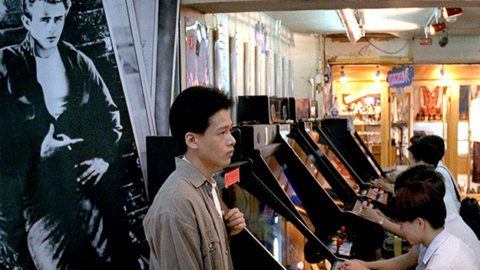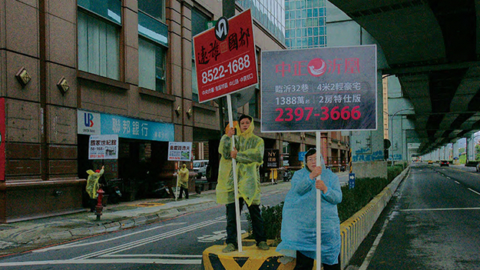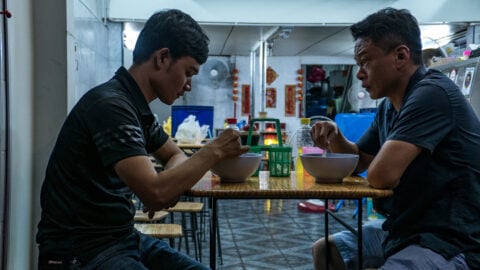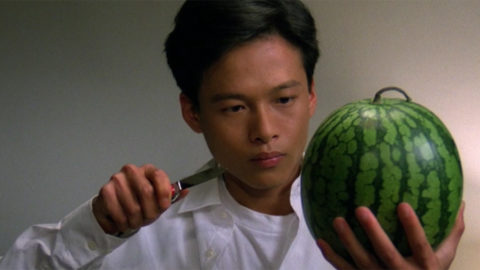Interview: Tsai Ming-liang
This article appeared in the August 12 edition of The Film Comment Letter, our free weekly newsletter featuring original film criticism and writing. Sign up for the Letter here.
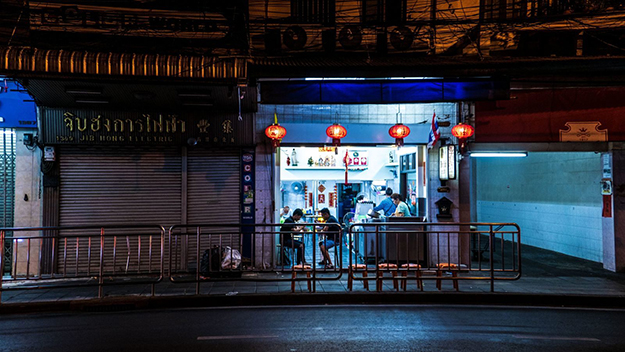
Days (Tsai Ming-liang, 2021)
Since first watching Days over a year ago, I’ve carried the film within me like an ache—a visceral memory both painful and sweet. Tsai Ming-liang’s new feature was one of the last films I saw in a packed theater before the pandemic, at the last festival I attended in person. But it’s not just the since-elusive thrill of physical togetherness that made Days imprint itself on me with such somatic force. The film itself, composed of an almost dialogue-free series of long, isolating takes, is a kind of corporeal caress: an awakening to our bodies’ abilities to grow and fail and ache and yearn, often despite ourselves.
And what better canvas for this reflection than Lee Kang-sheng, Tsai’s muse for more than 30 years? Like tree rings, Tsai’s films preserve the evolution of Lee’s face and body across time. For those of us who’ve followed their collaboration over the decades, those past images might flicker beneath the inaugural, five-minute shot of Days: Lee sitting at a window, his face wrinkled with age and strained by pain, while winds and rain swirl outside. The neck and back ailments that afflicted Lee’s 20-something character in 1997’s The River have become real with time. In close, extended shots, Tsai follows the actor as he deals with the illness and its treatments, which involve long baths, acupuncture, and a neck brace.
These scenes intertwine with those of a new entrant in Tsai’s recursive filmography: Anong Houngheuangsy, a youthful Laotian migrant worker whom Tsai met serendipitously in Bangkok. Tsai extends the same patient attention to the material conditions of Anong’s threadbare life—his dingy apartment; his solitary routines of sleeping, showering, eating, cooking, and working—that he accords to Lee’s bodily existence. The film reaches its climax in the scene that brings the two characters together: Lee receives a sexual massage in a hotel room from Anong, which Tsai films in full, in real-time, with barely any cuts. Their communion is entirely anonymous, devoid of any sentiment or psychological insight, but it trembles with the simple pleasure and release of human touch. Days is “superficial” in the best sense of the word: a film concerned with the richness of surfaces and the aliveness of skin.
Tsai had announced a retirement from cinema after 2013’s Stray Dogs, but Days seems to signal a new direction for the auteur, with the subject of mortality itself providing a fresh impetus. In July, I talked with the Taiwanese auteur over Zoom about bodies, time, age, love, sex, and more.
Many of your films explore themes of isolation and urban loneliness, some even in the context of a pandemic or environmental disaster. How did the experience of the real pandemic inspire or affect you creatively?
The impact of this pandemic is that I started to feel very trapped. Things I used to take for granted, like traveling abroad and going out, I really cherish and miss quite a bit now. I wish I had enjoyed it more when I had the freedom to travel.
Something that has affected me aside from the pandemic, as an individual, as a person, is aging—and that is something that never changes, with or without the pandemic. Aging has changed how I see things in life, and how I interpret or feel about this sense of loneliness now that I’m older. The longing for love changes as the result of the aging process. Now there’s not so much of the yearning. Now there’s the fear that I might lose the ability to love with age.
You’ve said that all your films are “are a development of the way I look at Lee Kang-sheng.” How are you looking at him in Days, and how is it different from the ways you’ve looked at him before?
In Days, I focused on the physical body of Lee Kang-sheng—his exterior. I suddenly realized that because of the aging process, the body is ever-evolving. I can see that inevitable evolution in Lee’s exterior, and that also prompted me to see myself as part of this aging process, since we’re 10 years apart. He almost served as a mirror. We are more and more alike the more I look at him. I think that’s a little bit different from when I was observing him in the past. I was observing how he lived and grew as a human being, and his life experiences. Now, I focus on the exterior, the physical body, how it morphs, and how it evolves as time passes.
As I understand it, you began filming Lee as he was dealing with health problems and seeking treatments without the agenda of making a film. You’ve said that you just wanted to “save images” of him. What precisely did you want to preserve with the camera?
This idea of “depositing images” is the result of the change in my concept of what it means to be a director. Since I worked with art museums for many of my recent works, I started to think that the way to make a film is not unlike painting. To paint something that you’re moved by, that’s your creative outlet. When you finish that painting, you don’t feel like you need to show it to everybody right away. I think by capturing images in the same way, you can capture reality. I just want to record the images first and archive them. I’ll worry about what I’m going to do with them later.
I have also been working on a lot of non-narrative films with art museums. During this time, because of Lee Kang-sheng’s illness, I got to really observe him. At times it was hard to watch, but I felt compelled to capture the state of his body, the progression of his illness, and the treatment as well. I have made a narrative film about something similar, The River, and there’s no reason for me to make another one. For now, what I want to do is capture the actual state of the body—the decay, the deterioration, the realness of what it’s like to be ill and to recover—and to save those images for later use.
Are you then using cinema as a way to counter the process of aging or decay—as a weapon against mortality?
Well, it’s hard to fight aging. [Laughs] Looking back at a lot of the films I’ve made in the past, I think I was full of energy. I was very, very young, very, very motivated. As I’ve aged, I’ve realized that I just don’t want to be bothered by the complexities and details of the conventional ways in which I used to make films. Taking care of every single detail of the production, having very structured scripts and films… that’s just not something I want to do now. So now I tend to gravitate toward things that are looser in terms of structure and narrative. I just want to make films that are not as complicated.
Well, Days is remarkably rich because of its minimalism and looseness, so I think your approach worked out well. I wanted to ask you about casting Anong. I read that you met him on the streets in Thailand, similar to how you first met Lee Kang-sheng—you just ran into him. What was it that struck you immediately about Anong that made you want to develop that relationship?
It has a lot to do with the way I think about filmmaking now. As I said, it has changed with age. Meeting Anong provided another impetus for me, another source of inspiration, during this transitional period in my understanding of filmmaking. When I met Lee, I had a film in mind and I thought that he would be the perfect person to portray the role. Whereas with Anong, it was very different. I didn’t have any agenda. I met him and then we continued our interactions by video chat so I could see his daily life, his way of going about his business. He is a Laotian migrant worker in Thailand. Most of the time when we talked on video, it was after he had finished work and was back in his rented room and had started his mundane routines. I was moved by how real it was, in terms of the lives of migrant workers in Thailand, and I wanted to capture that. I was so compelled that I flew to Thailand with a cinematographer and that was the first time we shot the way Anong conducted his daily life. That started the process of depositing images based on what I was moved by and touched by.
I think of the introduction of Lee Kang-sheng into my films as a process of construction—an architectural construction in which he was a major element. Whereas for Anong, it’s pretty much a sketch. I didn’t have any final product in mind, I just wanted to sketch him, and in this case I used cinematic images as my sketching tool. So it felt even more real, and that realness inspired me to think of a different way of making films.
What interests you about the nature of informal or migrant work? It’s a theme in nearly all of your films—many of your characters are informal laborers or have very precarious work conditions.
When I went back to Malaysia to shoot I Don’t Want to Sleep Alone in 2005, I immediately gravitated toward migrant workers in Kuala Lumpur. I would follow them everywhere. I even saw them being coerced by police officers to give them money. It is something I feel very drawn to and also can relate to as someone who grew up in Malaysia and now lives in Taiwan. I see myself as a sort of migrant worker even though my situation is not as bad as those people who are marginalized. But this idea of a cultural and national transplant is similar. You go from one cage to another, from one country to another, trying to make a living. That’s why I have an affinity and attraction to this marginalized group of people, including Anong. This idea that we’re part of a diaspora—that’s a mentality I can relate to very much.
What made you think that the story of Anong’s life as a migrant worker would complement Lee Kang-sheng’s experience with aging and pain?
They both have a sense of being caged or trapped. In Lee Kang-sheng’s case, he was trapped by his physical body, his illness, and that is something that he has no control over. Whereas Anong as a migrant worker is also caged by the city he’s in, the predicament of his life, and his socio-economic situation. And it’s not just the similarity between the two, it’s also a projection—I can see myself [in them] as well.
I have always been interested in the idea of the life cycle—of how the physical body goes from strong to weak—and in juxtaposing the different stages of the body to come up with something new. For example, in the shower scene in The River, I used Miao Tien, who is an actor from the martial arts genre. He had never actually shown his skin or taken off his clothes in front of the camera. But I asked him to do so for this scene and put him together with the young, fit Lee Kang-sheng. So you have this juxtaposition that shows how the body morphs and evolves, and it’s very similar to what happens in Days when I have Lee Kang-sheng completely naked in bed for Anong to give him a massage. Now Lee Kang-sheng has become the older person with an aged body, and you have this new face on screen with a particularly fit body, and there’s a sense of catharsis or solace in seeing how bodies evolve and change as you age.
I want to ask about the sex or massage scene, which is so incredible and cathartic to watch. Even though the sex is transactional, because Anong is paid for his service, it is remarkably wholesome compared to sex scenes in your previous work.
It has a lot to do with Anong as an actor and as a person. He is a migrant worker and had many jobs before I met him, including as a trained masseuse. So he does know how to give a massage. Not only that, he has a very unique way of giving a massage. It’s almost like a dance, and it is beautiful to watch. That’s the reason I wanted to keep that scene very long. It’s one of the most important scenes in the film. Because the sex is transactional, there’s no emotional baggage involved, and that makes it pure. It’s just two people seeking a release, or solace, from each other, and I find that incredibly pure and pleasant, unlike the sex scenes in my past films which are always unhappy or unpleasant. I kept it long because I wanted everyone to feel as if they were getting a massage by watching the scene. We shot it in one day in a hotel we checked into without telling them we were shooting a sex scene. It went very smoothly; they worked well together.
The other scene that has stayed with me is the opening, which is a five-minute shot of Lee Kang-sheng just sitting and looking out the window. With a scene like that, how do you know when to cut? How do you assess duration, since duration is really the force of it?
I usually shoot every scene with a very long duration. It might not all be included in the final film, but I tend to shoot that way because you can get unexpected changes from the actors or the surrounding space. The soundscape also changes when you shoot for a long duration. By observing them for such a long time, you also get to see something richer, more real. For example, the day when we shot the opening scene of Days, there was a typhoon. As we shot this scene, the winds, the rain—you can see the waxing and waning of it, the typhoon going in and out. To juxtapose that with Lee Kang-sheng, this emotionless person sitting there, static, with a sickly appearance—I mean, he was actually sick at the time, and I remember we prepared cups of water for him, though he didn’t actually bother to drink them—I felt that was perfect.
Some people might think that my films are unnecessarily long, but to me it feels necessary to have this realness and richness through the process of patiently observing the unexpected happenings in front of the camera. It’s almost like putting a painting in an art museum. But in the museum, [viewers] can control how long they’ll look at a painting, while as a director, I get to choose how long they get to look at a scene, unless they choose not to participate and close their eyes.
Many thanks to Dr. Vincent (Tzu-Wen) Cheng for translation.



